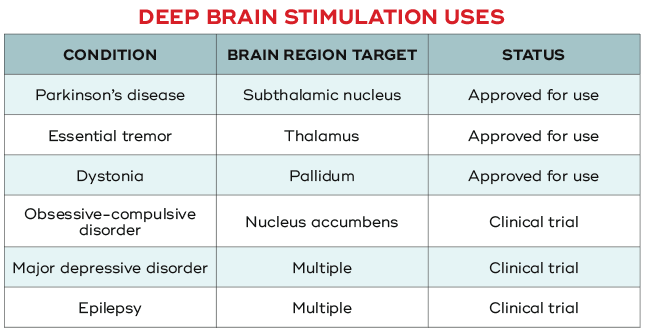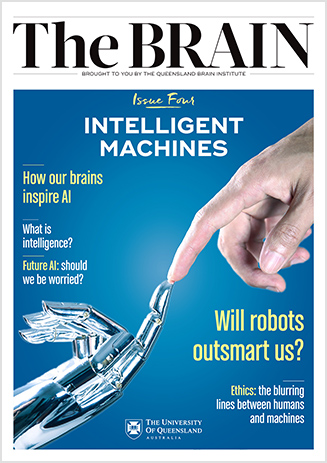Deep brain stimulation (DBS) is the use of electrodes surgically inserted into target regions deep in the brain, to stimulate neurons. This reduces or stops unwanted symptoms of disorders, such as the tremors of Parkinson’s disease.
Likened to a pacemaker for the brain, the device is programmed to deliver regular stimulation, as a way of keeping misfiring neurons on the right track.
Which brain structure is targeted depends on the neurological disorder and the specific symptoms being treated. Deep brain stimulation began as a treatment for Parkinson’s and is now used for a range of movement disorders, from essential tremor, to dystonia.
Clinicians and researchers see huge promise for the technique in treating a range of other conditions, like Tourette's or OCD. Doctors can also use the electrodes to record direct activity of the brain and learn more about how it functions.
The future of deep brain stimulation
Despite the success of deep brain stimulation, it’s not fully understood how or why it works, which makes it difficult to improve the technology.
One problem with current devices is that the stimulation is always on and always delivered in exactly the same pattern, at least until the patient has a check-up with their neurologist. The constant use drains the chest-implanted battery that powers the electrode in the brain and may also produce side effects.
An ideal solution would be to create a device that automatically adjusts the level of stimulation based on the person’s symptoms. For example, the brain of a patient with epilepsy can exhibit tell-tale signs of an oncoming seizure, which could be used to trigger stimulation that may stop its progression.
Once the seizure activity ends, the stimulation would switch off. The key is being able to detect and respond to abnormal activity, which is not an easy task. Some experts believe this will be easier for epilepsy than other conditions because the misfiring of neurons is more defined.
Another challenge is the placement of electrodes. Because some brain regions affected by neurological disorders are extremely small, placing an electrode in the right location can be very difficult. Neurosurgeons have reference atlases for a patient to help guide placement, but every brain is slightly different.
Doctors use many sources of information to confirm the best location, including: the type and amount of electrical activity of neurons; a pre-surgery MRI scan of the patient’s brain; and the path of the electrode within a patient’s brain.

Definitions
Brain-computer interface
Also called brain–machine interfaces. These devices use decoded brain activity to control an external device, such as a mouse cursor or prosthetic limb.
Electrode
A device used in deep brain stimulation to measure or stimulate electrical brain activity. Any instrument used for recording brain electricity (eg. EEG or electroencephalography) or stimulation requires electrodes.

